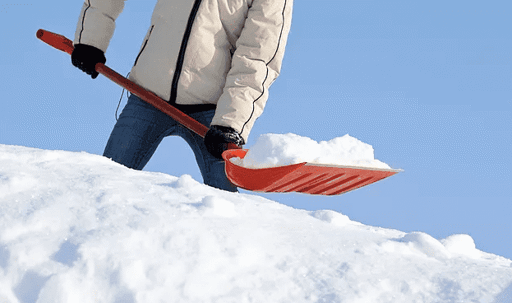One of the basic rules in a Slip & Fall negligence case is the “natural accumulation rule,” which exists in several states like Wyoming that experience long, cold, dark, and wintry winters. The rule protects landowners from liability for snowy or icy sidewalks, because, as a practical matter, everyone living in states like Wyoming ought to know that walkways during the winter might be snowy or icy.
In a past article about a Slip & Fall negligence case, I shared with you some of the basic rules and elements that are typically involved.
But there’s a nuance to this rule -- the local ordinance. What if the city or town where the slip & fall took place enacted an ordinance that requires landowners to keep their sidewalks free of ice or snow? The Wyoming Supreme Court has stated that these ordinances show the city’s “clear intent” to establish a “heightened standard of care.” Id. This means the city’s ordinance CREATES AN AFFIRMATIVE DUTY (overriding the natural accumulation rule) for a landowner within the city limits to remove snow, ice, slush, or anything else mentioned in the ordinance.
How and when snow, ice, and slush need to be removed depends on the ordinance. Take a look at the ordinances below, from different towns in Wyoming.
1. Cheyenne
12.04.040 - Duties of property owners relative to sidewalks generally.
Maintenance. Every sidewalk must be maintained in a safe condition at all times by the owner of the abutting property.
8.60.090 - Snow, ice or slush as a nuisance.
Sidewalks. Snow, ice or slush on a sidewalk is a nuisance, whether the sidewalk is on a vacant lot or a lot containing a building of any kind...Owner(s) and/or, if appropriate, the occupant(s) of property abutting a sidewalk shall within a twenty-four (24) hour period, after a snowfall, remove snow, ice or slush from such sidewalks and maintain them free of the same...
2. Laramie
12.08.020 - Snow, ice and debris—Removal from sidewalks.
All persons shall keep the sidewalks in front of and adjacent to the tenements or grounds owned, occupied or managed by them clear of ice, mud, dirt, rubbish or filth. After any fall of snow, such persons shall cause the snow to be immediately removed from such sidewalks.
3. Sheridan
23-4 Removal of snow, etc., from sidewalk—Duty of owner, etc., of abutting property.
The owners, agents and occupants of any house, warehouse, store, tenement house or any other building, and the ground belonging thereto or occupied by them, and the owner and agent of any vacant lot within the city, shall keep the sidewalks, whether paved or not, in front of and adjoining such property, clean, and after any fall of snow, shall cause the snow and all slush and ice to be immediately removed from the sidewalk fronting their respective lot into the carriageway of the street.
As you can see, these ordinances are similar in ways but different enough that you might need a trained eye to help you see how they apply to the facts of your case, how they apply to the natural accumulation rule, and how your own carelessness (or alleged carelessness) might have contributed to the fall. Personal injury attorneys have dealt with these issues in court and are trained to know how to delve into these issues and more.
If you’ve slipped and fallen and injured yourself on someone else’s property or sidewalk, contact a personal injury lawyer to discuss the details and whether or not you have a claim.

